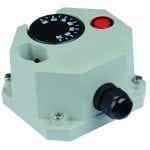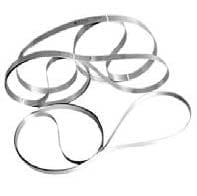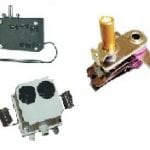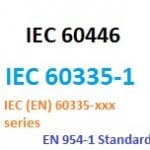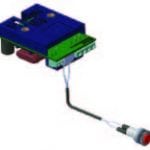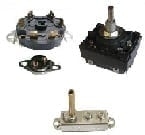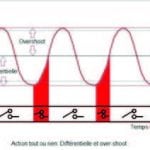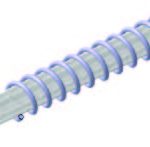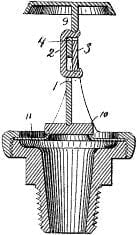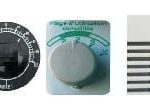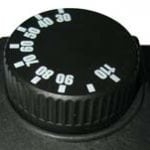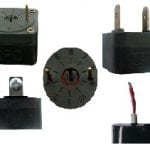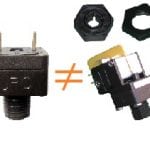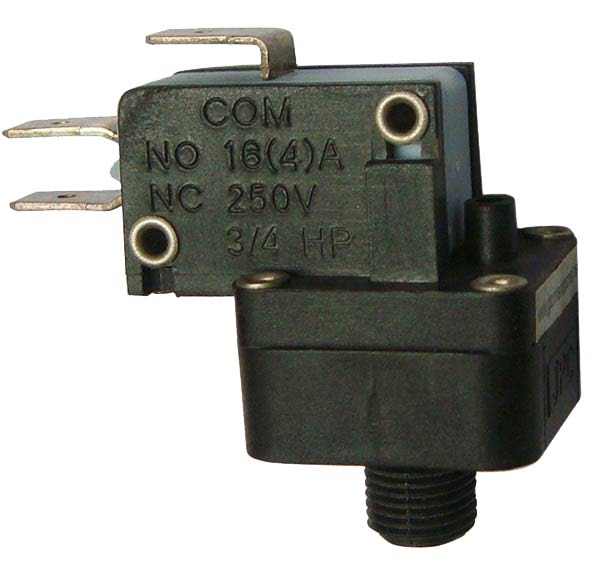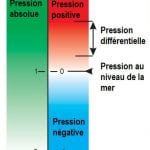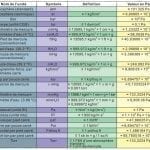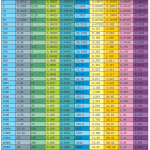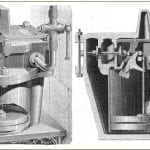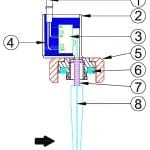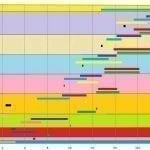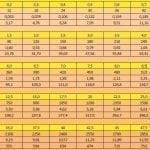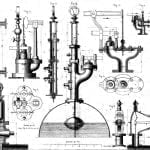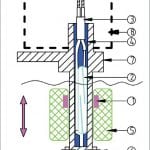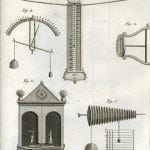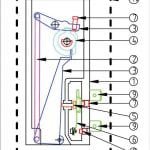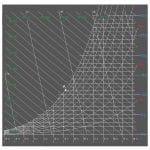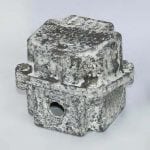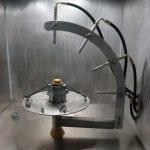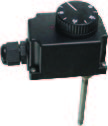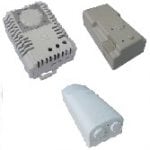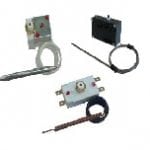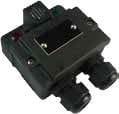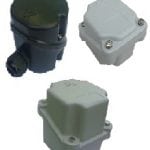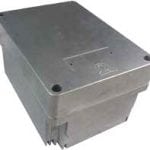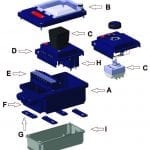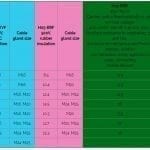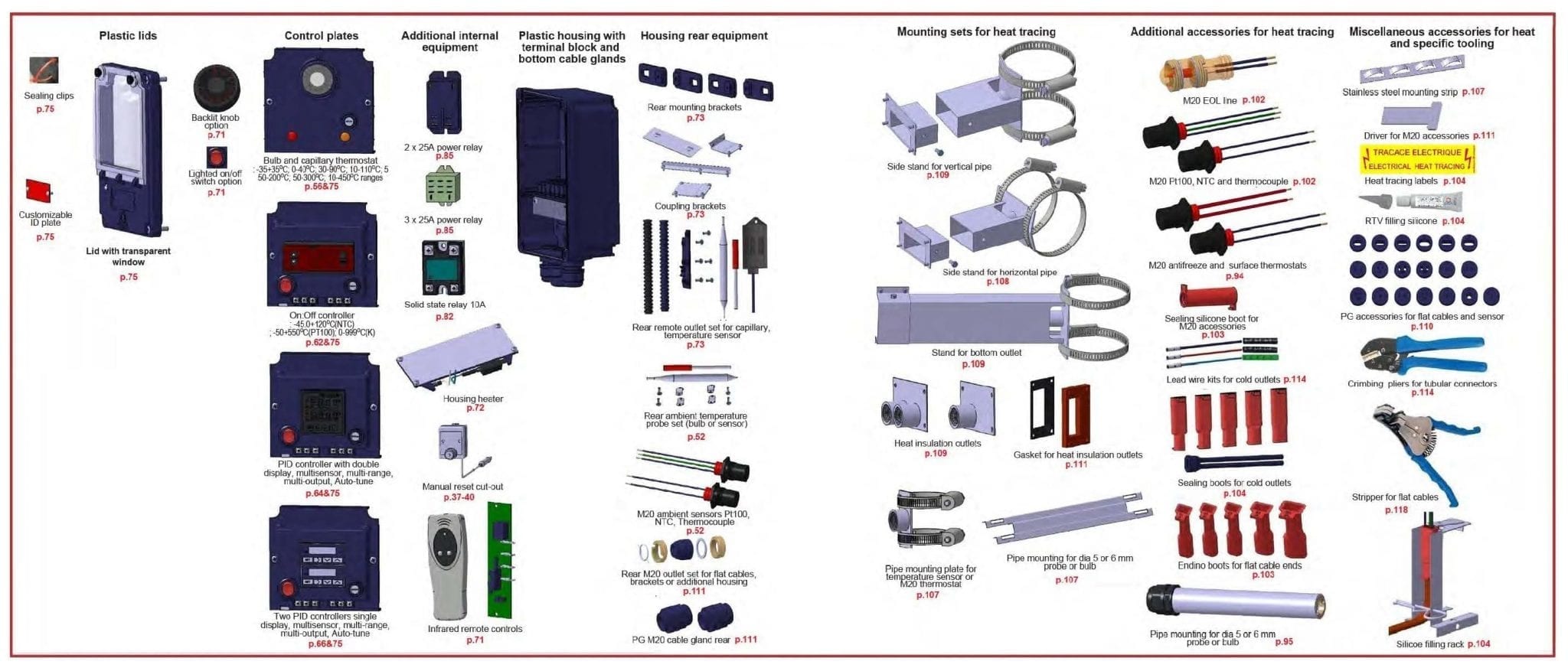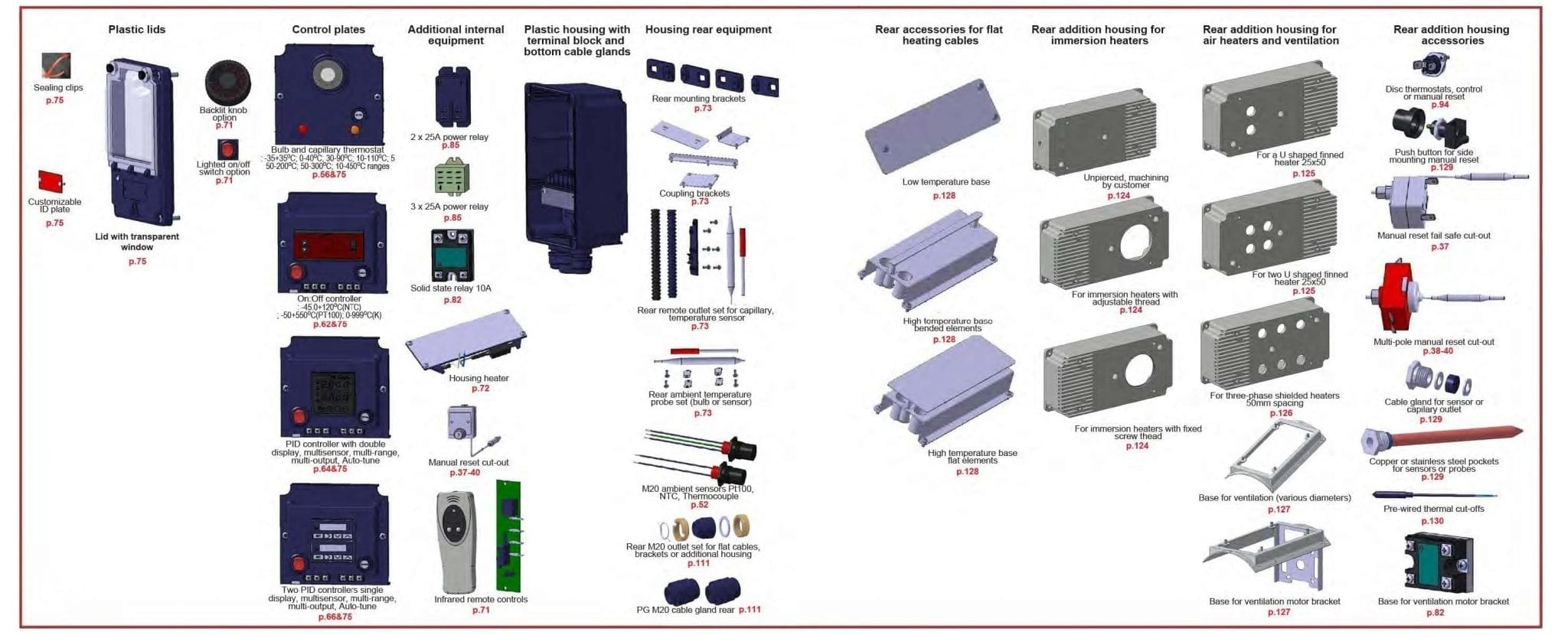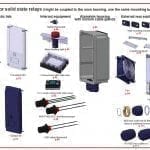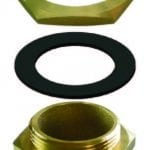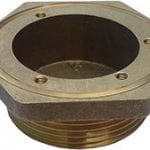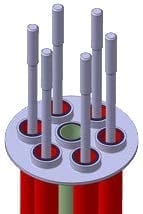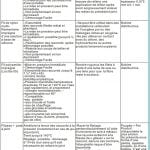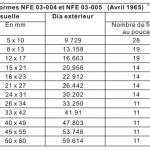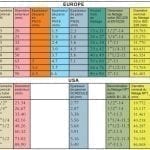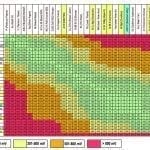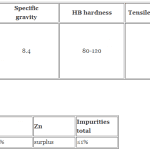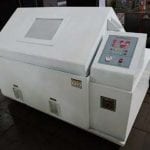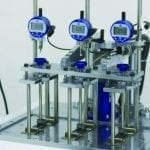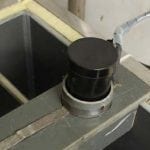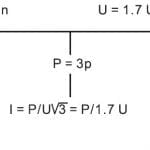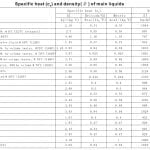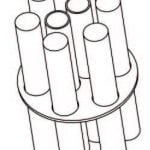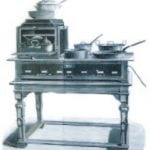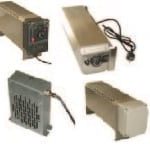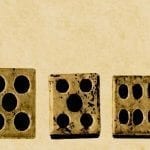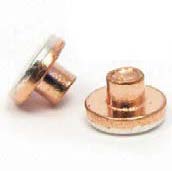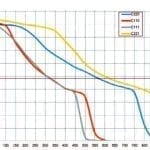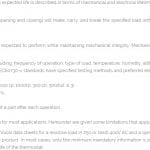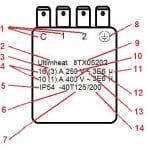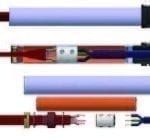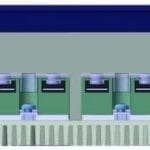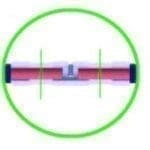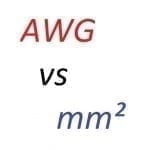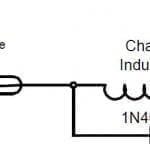Technical Information
Thermal
Adjustment or reset access devices
It is often necessary, when the devices include a system of adjustment or a reset, to be able to have access to it, without having to unscrew the lid of the box.
One solution is to use enclosures with an easily opening porthole or window, while protecting...
Historical introduction to temperature measurement
The temperature measurement was preceded by a long period, throughout the 18th century, when first empirically and then gradually more accurately, have been developed measurement scales, were discovered fixed points for the calibration of these scales,...
Temperature sensing principles
The bimetal strip is formed by two co-laminated metal. One has a high coefficient of expansion, the othera lower or zero. When the strip is heated, it bends proportionally to the temperature. These bimetal blades are generally flat and fixed at one end....
Thermostats types
It is currently the thermostats family where quantities are the most important. Numerous configurations exist, and the current trend is simplification and footprint reduction.
Terminology and vocabulary used for thermostats
Standards EN60730 and EN 60335 define, sometimes with differences, the vocabulary to use. However, it is often different from that used in practice.
Important extracts of standards related to control or safety circuits
§3.8.1 All-pole cut out: Cutting in two conductors in a single operation, or for three phase units, the cut of the three conductors in a single step … Note: for three-phase, the neutral lead is not considered as a power conductor.
Thermostats installation
The proper functioning of a thermostat depends primarily on the correct choice of the component, but also the conditions of its installation. Conditions used to calibrate regulating and control equipment in the factory are always ideal laboratory conditions,...
Description of temperature controls
Used as control thermostats or as a safety thermostat with manual reset, these thermostats have a disc made of two different metals laminated together for temperature sensing element. These two metals have different expansion coefficients.
Temperature control modes
While thermostats typically operate only in the on/off mode, the electronic controllers can regulate in two main modes: on/off with adjustable differential or PID.
Heat tracing applications
To reflect the maximum temperatures allowed by the insulating polymers, the powers of flexible heating cables are generally between 5 and 30W/meter, exceptionally 40W/m and 60W/m for self-regulating cables.
Historical and technical introduction of fusible alloys and fire safety fusible links
The earliest known piece made of lead and tin alloy seems to be an Egyptian vase found in Abydos, dated around 1400 BC.
During the Roman Empire, lead was used for the construction of water pipes. Melting at 325°C,
Thermostats and humidistats, how to select the right knob.
What users see from a control system is, most of time, the adjustment knob. The overall idea of the product quality is hence first based on the visual, the design, the feeling when manipulating the knob and how the adjustment adapts to the application.
Ultimheat ...
Setting of knobs with adjustable span
In some applications it may be necessary to limit the temperature maximum setting (or minimum) possible by the user. Some knobs that we have developed provide this option.
Pressure
Technical foreword of elastomeric membrane pressure switches
The pressure switches of this catalogue are made according to the flexible elastomeric membrane technology.
The pressure applied deforms the membrane which then actuates an electrical contact.
Differences between air switches and pressure switches
Pressure switches are used to control the pressure of a medium and operate an electrical device. When pressure rises to the set point value, they switch off the equipment or switch on an alarm. Fluid they control can be air or water. There is no barometric...
Important parameters to select a pressure switch
Accuracy, actuating force and differential are given by membrane surface.
Absolute pressure, barometric pressure,negative pressure, differential pressure
Although pressure is an absolute value, the current measures pressure, are usually made relative to ambient air pressure. In other cases, the measurements are compared to vacuum. This leads to confusion and errors.
Conversion tables of old pressure measurements units
Conversion of Pascal table for different pressure measurements units, included old and non metric pressure measurements units ( the comma is the decimal delimiter)
Unit name
Symbol
Definition
Value in Pa
Atmosphere (standard) ...
Pressure Conversion Table, metric / imperial
Pascal pressure conversion table in other current pressure measurements units
Level and Flow
Flow switches historical foreword
In antiquity, the flow measurement was one of the first means of time measurement. But it was not until the steam engines development and the need to control their water supply, that measuring devices were developed.
Flow switches technical foreword
A certain force is required to actuate the electrical contact device. It can range from a few tenths of grams for systems with reed contacts with a power rating of 10 to 20VA (0.5Amp), to 50 grams for snap action micro-switches with a 5Amp 250V ratin...
Float level switches historical introduction
If the level measurement, especially for meteorological purposes seems to date back to the 4th or 5th century BC in India, the development of steam boilers for locomotives and low pressure steam boilers for central heating in the first quarter of the...
Float level switches technical introduction
Selecting a magnet for a level switch application must take into account the characteristics of the liquid in which it will be immersed, of the temperature at which it will be subjected, of its corrosion resistance, of the magnetic field required to operate...
Humidity
Humidistats historical foreword
Relative humidity control is relatively new, and the first mechanical devices that were used for this purpose dating from the early 20th century, and were related to the development of central heating and air conditioning, and the concept of environmental...
Humidistats technical features
Introduction to nylon ribbon humidistats technology (Others names: Humidostats, hygrostats, humidity switches)
Conversion table relative humidity / absolute humidity
Diagramme psychrométrique ou diagramme de Mollier
Mode d 'emploi :
Pour connaître le taux d'humidité absolue à partir du taux d'humidité relative pour une température ambiante donnée, se placer à l'intersection entre la courbe d'humidité relative...
Protections
Surface engineering of metallic housing
Surface condition is an essential parameter of resistance against atmospheric corrosion. Both aluminum and stainless steel naturally form a protective oxide layer on the surface. Corrosion occurs only when this protective oxide layer is crossed or destroyed....
Electrical protection classes
The housings are designed to protect electrical equipment located inside. This protection must be considered in the electrical and environmental angles.)
General overview of JPC enclosures range
Temperature control of ambient, surface, air, liquids, pipes, by means of bulb and capillary, ambiance or rod probes.
JPC Design concept of the Y0 types enclosures
The design of the Y0 enclosures was made to provide a starting range with a particular selection of low cost solutions. The plastic used is PC-ABC compound, with or without fiberglass reinforcement.
JPC Design concept of the Y1 types aluminum enclosures
Y1 range includes a wide range of thermostats in IP65* metal housing with high mechanical resistance (IK10** except models with external knob), intended for commercial or industrial applications covering ranges from -35 °C to +760 °C.
Overview of the JPC Y2 types plastic enclosures
Fixed setting ambiance or Antifreeze thermostat, IP65, cable gland output, without pilot light.
Overview of the JPC Y3 types enclosures for general uses
The design of Ultimheat connection boxes for immersion heaters was oriented on the multiplicity of applications and therefore every possible machining.
Overview of the JPC Y4 types enclosures for general uses
These aluminum and plastic housings are designed for receiving and mounting electronic or electromechanical components.
Cable glands selection
To fulfill its function, especially tear strength and ingress protection, cable gland must be adapted to the diameter of the cable.
Synoptic table of control boxes and accessories for heat tracing
Mounting and coupling examples with additional housings
Synoptic table of control boxes and general electro thermal accessories
Assembly and applications examples
Threads and Fittings
Overview of immersion heater fittings
In Europe there are two common types of threads used on immersion heaters fittings.
Threads according ISO 228-1, also said BSPP or cylindrical gas thread (G).
2mm pitch metric thread according ISO965-1, little used, which was the subject of an attempt...
Brass fittings and threaded accessories for immersion heaters
According to the Directive 2011/65/ dated June 8, 2011 (Rohs), copper alloys are allowed to have a maximum of 4% by weight of lead as an alloying element.
Stainless steel fittings and threaded accessories for immersion heaters
According to the Directive 2011/65/ dated June 8, 2011 (Rohs), stainless steel alloys are allowed to have a maximum of 0.1% by weight of lead, lead, mercury, hexavalent chromium, PBB (Polybrominated biphenyls), PBDE (Polybrominated Diphenyl Ethers) and...
Raw Materials
Corrosion resistance of aluminum
The plastic enclosures and their weather resistance are treated in the catalog N ° 3. We will deal here with the corrosion resistance of aluminum housings and accessories.
Molded silicone parts typical properties
Hundreds of specific silicone boots have been developed during the last decade, to cover various customer requirements. This catalogue shows some of them.
Main properties of brass
According to the Directive 2011/65/ dated June 8, 2011 (Rohs), copper alloys are allowed to have a maximum of 4% by weight of lead as an alloying element.
(Provisions of Article 4 and paragraph 1 of Annex II, limit value set by 6c of Annex III)
Main properties of usual stainless steels
According to the Directive 2011/65/ dated June 8, 2011 (Rohs), stainless steel alloys are allowed to have a maximum of 0.1% by weight of lead, lead, mercury, hexavalent chromium, PBB (Polybrominated biphenyls), PBDE (Polybrominated Diphenyl Ethers) and...
Main properties of plastic raw materials used for enclosures
The classic housings, with only 5 sides and a lid, require a long and costly layout, most of the time ignoring the application needs: security, fire resistance, water penetration, shocks, UV, temperature, etc.
Main properties of raw materials used for enclosure gaskets
The material was not chosen in regards of its price or ease of molding like gaskets made of PU foam injected through the process “Formed in place foam gasket or FIPFG “, or even of the possibility of die-cutting, but to meet the technical requirements of ...
Main characteristics of the heat shrinkable sleeves
Heat shrinkable sleeves were invented in 1960 by the company Raychem. The tubes are made by extrusion, and subjected to molecular modification by radiation of an electron gun.
Comparison of the characteristics of the main magnets types
Selecting a magnet for a level switch application must take into account the characteristics of the liquid in which it will be immersed, of the temperature at which it will be subjected, of its corrosion resistance, of the magnetic field required to operate...
Comparative crevice and pitting corrosion tests on stainless steels, Incolloy and titanium tubes in high chlorine content water heaters, as used in spas, whirlpools and swimming pools
Heating elements tubes are used in circulation heaters to heat water in swimming pools, spas, and whirlpools, and in booster heaters or main heaters in domestic central heating.
Heating Systems
Table of different connection methods of heating elements
Heating elements connections (Heating elements resistance "r" of unit power "p" with nominal voltage "U")
Guide for immersion heater selection
Figures provided in this section are results of tests made in our laboratory. Charts were smoothened by computer, and are given for specified power and for information only.
Historical foreword to air heaters technology
The invention of sheathed heating elements comprising a metal tube swaged around a coiled heating wire, and which is insulated by compressed magnesia, was an essential step of the electrothermics development.
Useful technical tables for air heating
Average surface temperature and average air temperature of air heaters described in this catalogue
Explosion Proof Products
Historical foreword to explosion proof products
The explosion of firedamp in mines caused by the flames of oil lamps, was the cause of many accidents and caused hundreds of deaths. This explosion had a double danger: methane gas and coal dust.
Technical foreword to explosion proof products and marking
Electromechanical thermostats have an important characteristic that makes critical their use in potentially explosive atmospheres: the opening and closing of their electrical contact, which occurs regularly during their normal operation, produces a spark...
Electrical
Historical introduction of ceramics used in connection blocks
Hard Porcelain, originated from China, whose manufacturing process has been closely guarded for centuries, owes its characteristics of whiteness, fineness, resistance to temperature, and hardness to the use of two particular minerals, kaolin, ("Gao Ling...
Electrical contacts
As numerous mechanisms exist, we decided not to distinguish on the basis of constructive technique, but according to their operation speed, which is the key element.
Technical introduction of connection blocks made in ceramic and polyamide
Ceramic was the first insulating material used in the electrical connection terminals. Mechanically resistant, exceptionally fire resistant, excellent electrical insulator, it had all the qualifications. Produced from locally available raw materials,...
The different normalized thermostat electrical life classes
In the specifications for an electromechanical thermostat, the expected life is described in terms of mechanical and electrical lifetimes.
Explanation of printed values made on a thermostat upon IEC60-730-1 § 7-2
Identification of terminals that are suitable for the connection of external conductors, and if they are suitable for line or neutral conductors, or both.
Mounting examples of heating ribbons on thermostats, lights, wires and extension cables
PT100 or NTC on extension cable
PT100 or NTC on extenson wires
M20 thermostat on extension cable
M20 thermostat on extension wires
Light on extension cable
Light on extension wires
Ribbon on disc thermostat and cab...
Introduction to the use of solid state relays (SSR) and comparison with electromechanical relays
The solid state relay, also called solid state contactor or SSR (English acronym for Solid State Relay) is the electronic equivalent of the electromechanical power contactor.
Cables and accessories connection methods with silicone filling
Sensors and accessories to be mounted in ISO M20x1.5 threads (type G sleeves)
Introduction to hexagonal crimping
The hexagonal crimping is the fastest way to connect two wires together, especially if this connection should be subjected to repeated thermal shocks. It is also the less bulky connection.
AWG diameters and sections in mm²
AWG
Diameter (mm)
Section (mm²)
AWG
Diameter (mm)
Section (mm²)
AWG
Diameter (mm)
Section (mm²)
24
0.510
0.205
17
1.15
1.04
10
2.59
5.26
23
0.575
0.259
16
1.29
1.31
9
2.9
6.63
22
0.643
0.324
1...
Reed switches contacts protection
1. The electrical contact system: reed switch or micro-switch
A certain force is required to actuate the electrical contact device. It can range from a few tenths of grams for systems with reed contacts with a power rating of 10 to 20VA
(0.5Amp),...

